How to Teach the Alphabet to Preschoolers
Is your preschooler ready to learn the alphabet? If so, this post is for you! Jam-packed with letter recognition activities designed to help you teach the alphabet, this post contains enough fun to keep your child busy for months!
Read on to discover more about this valuable pre-reading skill for young children, or scroll down to download eight of our free, top-quality letter recognition activities.
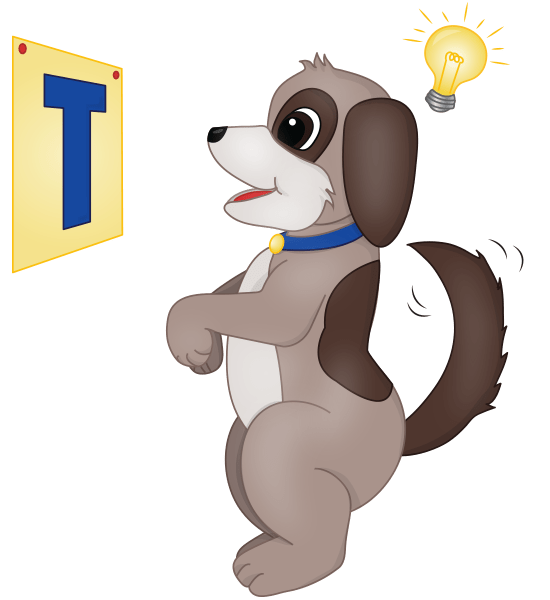
What Is Letter Recognition?
Letter recognition—also known as alphabet recognition—is the ability to:
- distinguish between the 26 letters of the alphabet
- say the letter name
If your child already knows “The Alphabet Song,” that is a great start! But there is more to letter recognition than being able to sing the ABCs. You want your child to be able to pick out the individual letters and name them, and that’s where the downloadable activities that follow really shine.
Advantages of Learning the Letter Names
Children who know the names of the letters have three major advantages:
- Kids who know letter names will learn the sounds of the letters much more easily. By contrast, children who don’t know the letter names often have tremendous difficulty in learning the sounds of the letters.1
- Children who can easily name the letters of the alphabet have an easier time learning to read.2, 3
- As they learn the letter names, children tend to be more motivated to discover more about the letters and about the words around them.4, 5, 6
So you know that teaching the letter names is important, but now you may be wondering…
Should Uppercase or Lowercase Letters Be Taught First?
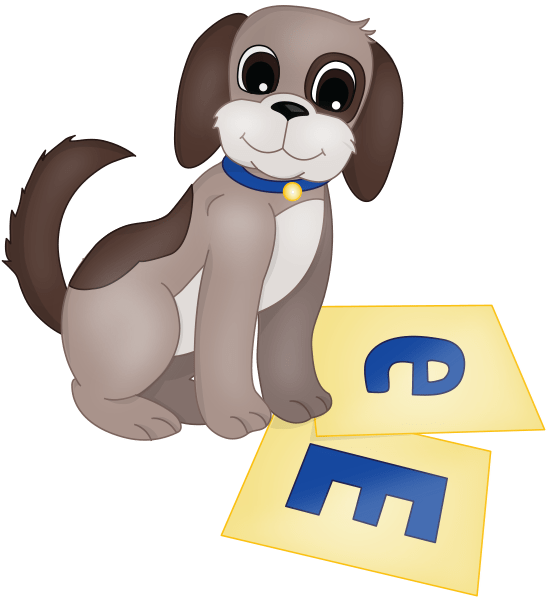
Developmentally, it will be easier for your child to learn capital letters first. That’s because the visual form of the capital letters is more distinct. Take a look at this row of capital letters:
A B C D E F G H I J K L M N O P Q R S T U V W X Y Z
The only letters that could be flipped and mistaken for another letter are M/W.
Now take a look at this row of lowercase letters:
a b c d e f g h i j k l m n o p q r s t u v w x y z
With the lowercase letters, there are several pairs of letters that could be flipped.
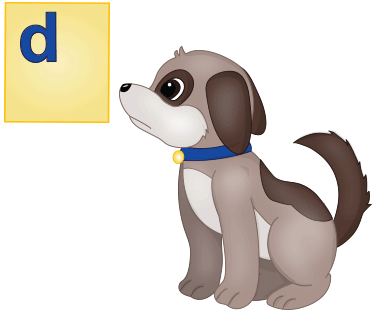
- b/d (flip on the vertical axis)
- b/p (flip on the horizontal axis)
- d/p (flip on the horizontal and vertical axis)
- p/q (flip on the vertical axis)
- n/u (flip on the horizontal and vertical axis)
So that’s why I recommend starting with the “easier” uppercase letters.
But what about the fact that most text is composed of lowercase letters? After all, this sentence has 57 letters, and only one of them is uppercase. Doesn’t it stand to reason that kids should learn the lowercase letters first?
The fact is that your child will learn all of the letters–uppercase and lowercase–before he learns to read. So why not start with the letter form that is easiest to learn?
Honestly though, it isn’t critical. If you want to teach lowercase letters first, that is fine. Just be aware that some kids do mix up those letters mentioned above. (And here’s help if your child already reverses similar letters such as “b” and “d”.) The most important thing is that your child has an enjoyable introduction to the alphabet, and that she can recognize the letters with confidence.
Now let’s dig in to the fun stuff!
Here Are 8 Free Letter Recognition Activities You Can Download!
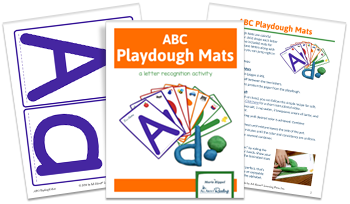
ABC Playdough Mats
Crafting letters out of playdough allows children to feel the alphabet as they roll and bend the dough to form the letters. Your child may not even realize he’s learning!
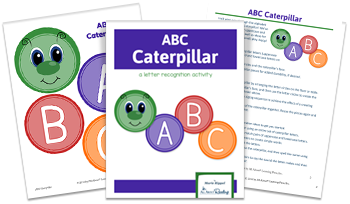
ABC Caterpillar
As your child inches his way through the alphabet with this colorful caterpillar, he’ll get plenty of hands-on alphabet play, including putting letters in alphabetical order.
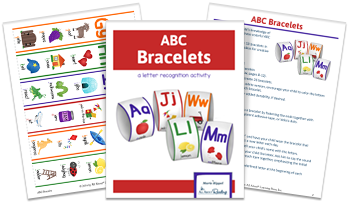
ABC Bracelets
Your little one will admire her “letter of the day” every time she glances at her wrist. And tomorrow she’ll get a brand new bracelet to “show off” to family and friends!
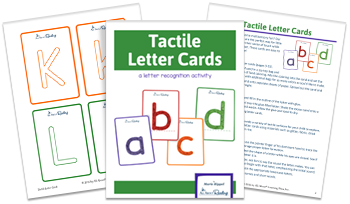
Tactile Letter Cards
Children learn about the world around them through their senses. Our tactile letter cards let children use their sense of touch to learn about uppercase and lowercase letters.
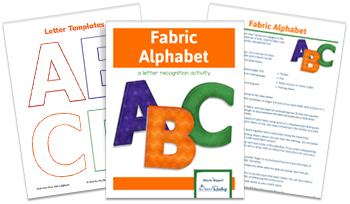
Make Your Own Fabric Alphabet
Playing with the alphabet is a great way to help your preschooler get ready to read. This easy-to-make, soft, and colorful alphabet turns learning letters into a tactile activity.
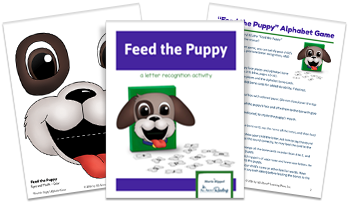
“Feed the Puppy” Alphabet Game
Our “Feed the Puppy” Alphabet Game lets kids practice the names of the letters in a super-fun way. After all, who doesn’t love learning with a cute puppy?
These activities will give your child hours and hours of fun while helping prepare him for formal reading instruction.
Keep Track of Which Letters Your Child Knows
When you are teaching letters to your child, make sure that you get to the end of the alphabet. This may seem obvious, but all too often, young children don’t master the last several letters. Be sure that your child knows U, V, and W as well as he knows A, B, and C!
To help you keep track of which letters have been learned, you can download this great little alphabet progress chart. Post it on your fridge or playroom wall.
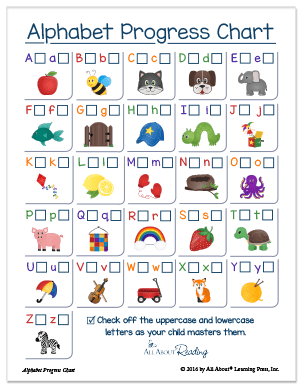
Letter Knowledge Is One of the Big Five Skills
Did you know that there are five skills that your child should master before beginning formal reading instruction? We call them the “Big Five Skills” and these skills lay the foundation for learning to read. In fact, they’re so important that we cover all of them in the All About Reading Pre-reading program.
If you’re ready to tackle the rest of the Big Five Skills, be sure to check out the All About Reading Pre-reading program. Your student will enjoy special games, crafts, and story time read-alouds, and you will love the way your student effortlessly learns essential pre-reading skills.
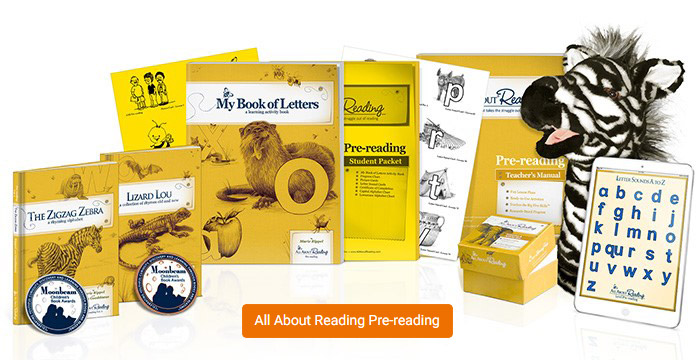
Which of these letter recognition activities are you going to try out first? Let me know in the comments below!
___________________________________
1. Mason, Jana M. (1980). When do children begin to read: an exploration of our year-old children’s letter and word reading competencies. Reading Research Quarterly, 15, 203-227.
2. Bond , Guy L., and Dykstra, Robert (1967). The cooperative research program in first-grade reading instruction. Reading Research Quarterly, 2, 5-142.
3. Chall, Jeanne S. (1967). Learning to read: The great debate. New York: McGraw-Hill.
4. Chomsky, Carol (1979). Approaching reading through invented spelling. In L. B. Resnick and P. A. Weaver (eds.), Theory and practice of early reading, vol. 2, 43-65. Hillsdale, NJ: Erlbaum Associates.
5. Mason, Jana M. (1980). When do children begin to read: an exploration of our year-old children’s letter and word reading competencies. Reading Research Quarterly, 15, 203-227.
6. Read, Charles (1971). Preschool children’s knowledge of English phonology. Harvard Educational Review, 41, 1-34.




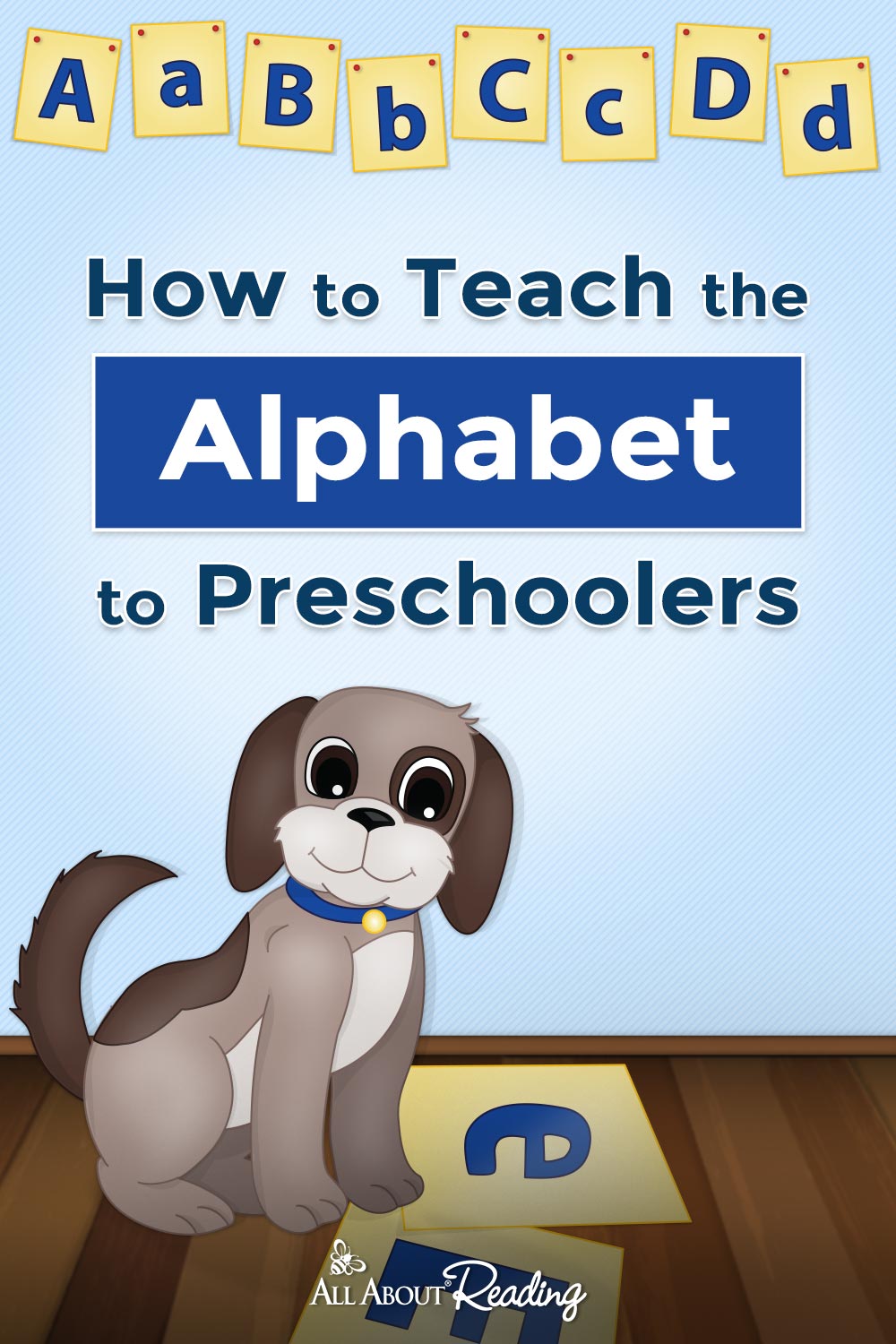



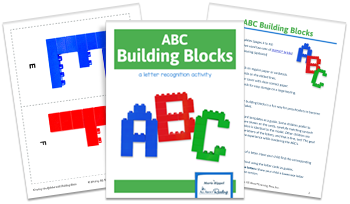






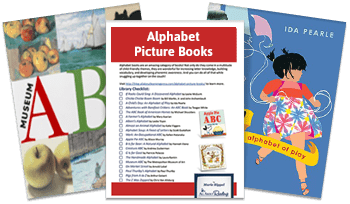


Sandra
says:Hi, I started my just turned 2 year old on a little preschool curriculum to have an English moment in the day (she is raised trilingual speaking my language fluent already, my husband’s language she makes 5/6 words sentences and English she understands but just speaks words) let’s just say it’s a big hit I did not expect her to really learn but she loves her letter of the week knowing them after 1 day, recognises her name also. And constantly asks then letter names she sees in books.
I wonder if it would be too early once she know the whole alphabet to start her on the pre reading program? She will be still only 2 then.
Robin
says: Customer ServiceSandra,
Some 2 year olds have done well with the Pre-Reading Program, although at a slow pace and with the parent following the child’s lead. Sometimes, parents find it best to go through the Pre-Reading Program twice. Once to learn the alphabet, and the second time to review the alphabet while mastering the phonological awareness skills.
Jesselyn
says:We’re working our way through pre-reading and I’m excited to incorporate some of these activities to help with letter recognition.
Robin
says: Customer ServiceGreat! I glad these will be useful activities for you as you move through the Pre-Reading Level, Jesselyn!
kamran
says:Very Helpful, Thanks for this article
Hope this video is also helpful for kids
https://www.youtube.com/watch?v=-hlwyiWB_CE
Robin
says: Customer ServiceThank you, Kamran.
Barbara
says:I just found out about your wonderful site. Thx for sharing.
Robin
says: Customer ServiceThank you, Barbara!
LANA
says:ABC Caterpillar was chosen for beginners
Robin
says: Customer ServiceLana,
The ABC Caterpillar activity is such a hit with many kids!
Stormi
says:Where in the process of learning the alphabet should they be working on letter sounds? The letter sounds are my absolute biggest struggle! 😫
Robin
says: Customer ServiceGreat question, Stormi!
Our All About Reading Pre-Reading program teaches letter sounds only after a child has mastered capital and lower case letter names. So, we recommend holding off on teaching letter sounds until your child has mastered the alphabet.
Also, once a child knows the alphabet well (knows all the letters and can match up lower and upper case letters), they can easily learn the letter sounds a few at a time as they learn to sound out words.
I hope this help, but let me know if you have additional questions.
Amanda
says:These are great ideas! I’m working through the pre-reading program with my daughter and the addition of the letter “bracelets” has been a BIG HIT! Thanks!
Robin
says: Customer ServiceI’m so glad that your daughter enjoyed the bracelets, Amanda! Thank you!
Kim
says:Very helpful, thanks!
Anna
says:We love the All about Reading Curriculum. We are on our second child using it and we are thrilled with the firm phonics foundation our children have gained from using this curriculum.
Jeannie Mc
says:What exciting news…new and color material!! We LOVE AAR and AAS!! Best programs ever!!!
Sarah
says:I am always on the lookout for ideas – I teach all levels of English as a second language and I like the preference for learning the capital letters first! I have 2 students that are just ready to start learning the letters and I am going to give it a try. I am also going to create a set of tactile cards. Great ideas! Thanks!
Robin
says: Customer ServiceYou’re welcome, Sarah! I’m glad the ideas and activities where will be helpful for your students!
Kimberly Treon
says:I love this! Thanks for sharing this awesome resource!
Allison
says:Thank you for the resources! My 4 year old is struggling with learning the alphabet. She will love the feed the puppy game. I’m excited to try it with her. We will be starting pre reading this fall.
Robin
says: Customer ServiceI’m sorry to hear your child is struggling to learn the alphabet, Allison. The Pre-Reading level will help.
In addition, consider working on just one letter at a time for a few days, or even a week, until your child knows it well. Only then introduce the next letter, but continue to review the first one every day. This adding in one letter at a time while continuing to review previously learned ones is much more effective than trying to teach lots of letters at once.
Let me know if you need ideas or have questions. I’m happy to help!
Rebecca Kenyon
says:Thank you for these great ideas!
Robin
says: Customer ServiceYou’re so welcome, Rebecca!
Kimberly
says:Wow, I love this! I can’t wait to do some of these with my almost 4 year old. I think she will love the caterpillar and feeding the puppy!
Robin
says: Customer ServiceI hope your little one has lots and lots of fun learning with these, Kimberly! The “Feed the Puppy” activity seems to be the biggest hit with young learners!
Kim
says:This is helpful. Thank you.
Robin
says: Customer ServiceYou’re welcome, Kim. Glad it’s helpful!
Karen
says:My little grandsons love the letter craft books!
Robin
says: Customer ServiceIt’s great to hear your grandsons are enjoying the Letter Crafts books, Karen! Thank you!
Rhonda
says:Thank you for all the free activity downloads. We have used several throughout the years and they are always a big hit! We love All about Reading and All about Spelling!
Robin
says: Customer ServiceThank you for letting us know that the activity downloads are a hit with your students, Rhonda!
Katie Hanna
says:I’m teaching higher levels to my big kids but am due to give birth any sag now and I’m grateful for this site as a reference for all ages and stages!
Robin
says: Customer ServiceCongratulations on the upcoming baby, Katie!
Laura
says:I love thr progress chart! All great ideas!
Nicole
says:I love the multi-sensory approaches to learning the letters listed in this article! My daughter is a hands-on learner and loved using things like the play dough mat and the tactile letters to learn her letters in an engaging way. We also completed the AAR Pre-Reading program, which was essential for her! It went at a good pace and involved lots of different fun activities to help her learn. After we completed the program, I was so confident that she learned everything she needed to know before we dove into AAR Level 1. Thank you so much for your materials, they have been a wonderful help.
Robin
says: Customer ServiceNicole,
Thank you for sharing how the Pre-reading Program helped your daughter, and the confidence it gave you. Wonderful to read!
Rachel
says:Thanks for all the great resources. Really loving the progress chart!
Mena
says:Such good ideas!!!! Using some of these with my two year old who wants to learn to read “just like his big brother and sister”!
Robin
says: Customer ServiceMena,
I’m glad these ideas will be helpful for your little one to be learning like his siblings!
Gina
says:I love all the extra freebie activities and suggestions. I love that I don’t have to go searching all over the internet to find fun extras. Thank you!
Robin
says: Customer ServiceYou’re so welcome, Gina!
Brittany
says:Such helpful information ♥️
Ashley Metcalf
says:Wonderful information!!
Robin
says: Customer ServiceThank you, Ashley!
gloria
says:I love the activities.
Thank you so much.
Robin
says: Customer ServiceYou are so welcome, Gloria!
Stormi Miron
says:My oldest has the letters down pretty well, but the sounds is where we struggle. My youngest is struggling with letter names though, so this is going to come in handy! Thank you!
Robin
says: Customer ServiceI’m glad this will be helpful for you, Stormi! We have a free Letter Sounds from A to Z app that may be helpful with your oldest learning the first sound of each letter. And our How to Teach Phonograms blog post has printable games and activities you can play for practicing the sounds.
Jennifer
says:What a great resource with wonderful tips! Thanks so much.
Robin
says: Customer ServiceYou are so welcome, Jennifer!
Kaitlyn
says:Greatly appreciate All About Learning’s blog posts! Always full of helpful advice and tips.